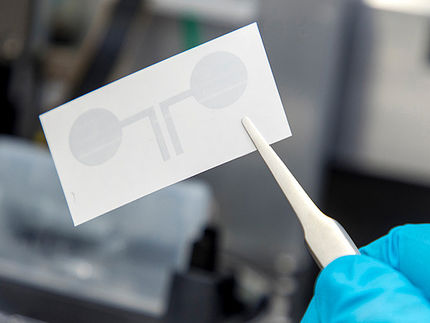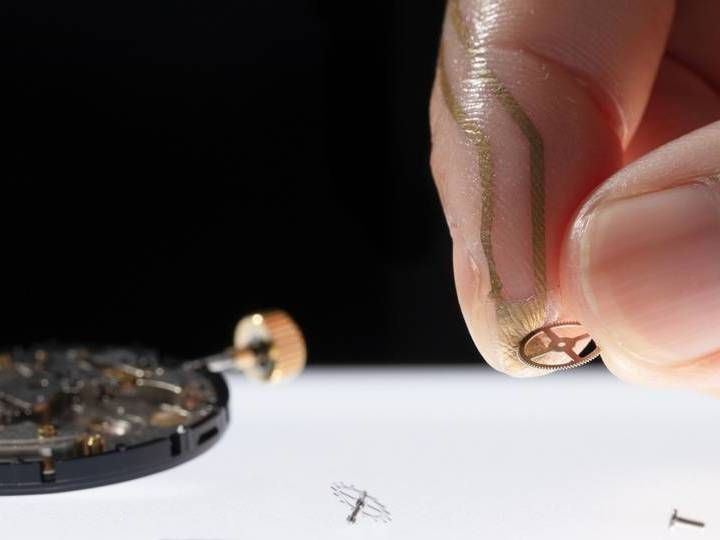Revolutionizing electronics using Kirigami
A research team in the Department of Electrical and Electronic Information engineering and the Electronics-Inspired Interdisciplinary Research Institute (EIIRIS) at Toyohashi University of Technology has developed an ultrastretchable bioprobe using Kirigami designs. The Kirigami-based bioprobe enables one to follow the shape of spherical and large deformable biological samples such as heart and brain tissues. In addition, its low strain-force characteristic reduces the force induced on organs, thereby enabling minimally invasive biological signal recording.

This is an ultrastretchable 'Kirigami' bioprobe device. The stretched device (upper picture) and the device placed over the biological tissue (lower image).
COPYRIGHT (C) TOYOHASHI UNIVERSITY OF TECHNOLOGY. ALL RIGHTS RESERVED.
High stretchability and deformability are promising properties to increase the applications of flexible film electronics including sensors, actuators, and energy harvesters. In particular, they have great potential for applications related to three-dimensional soft biological samples such as organs and tissues that exhibit large and rapid changes in their surface area and volume (e.g., a beating heart). However, conventional elastomer-based stretchable devices require a large strain-force to stretch it, that arises from an intrinsic material property. This makes it impossible to follow the deformation of soft biological tissues, thereby preventing natural deformation and growth. For device applications pertaining to soft biological samples, it is extremely important to reduce the strain-force characteristic of the stretchable devices to realize low invasiveness and safe measurements.
A research team in the Department of Electrical and Electronic Information Engineering and the EIIRIS at Toyohashi University of Technology has developed an ultrastretchable bioprobe using Kirigami designs.
"To realize the ultrastretchable bioprobe with low strain-force characteristic, we used a Kirigami design as the device pattern. The remarkable feature of Kirigami is that rigid and unstretchable materials can be rendered more stretchable compared to other elastomer-based stretchable materials. The stretching mechanism is based on an out-of-plane bending of the thin film rather than stretching of the material; therefore, the strain-stress characteristic is extremely low compared to that of elastomer-based stretchable devices," explains the first author of the article, Ph.D. candidate Yusuke Morikawa.
The leader of the research team, Associate Professor Takeshi Kawano, said, "The idea germinated in my mind one morning when I woke up and saw my son playing with Origami and Kirigami. I saw him realize high stretchability of the paper while creating the Kirigami designs. This made me wonder whether it is possible to develop stretchable electronics using the concept of Kirigami. Surprisingly, our preliminary studies on Kirigami-based parylene films by microelectromechanical systems technology exhibited high stretchability of 1,100%. In addition, we are extremely excited that the fabricated Kirigami-based bioprobes possess the distinct advantages of high stretchability and deformability, and are capable of recording biological signals from the cortical surface and beating heart of a mouse."
The research team believes that the Kirigami-based bioprobes can also be used to probe tissues and organs that exhibit time-dependent changes in their surface and volume due to growth or disease. This is expected to lead to the eventual realization of a completely new measurement method that can be instrumental in understanding the mechanisms governing growth and diseases like Alzheimer's.




















































